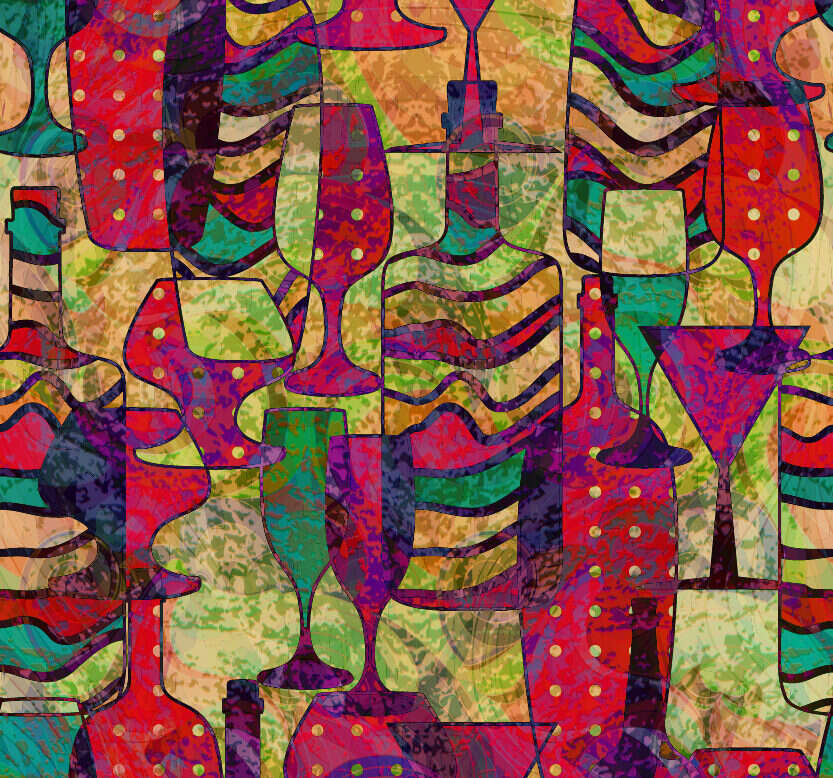
Natural wine is a rare corner of the wine world that excites younger drinkers. The fine wine world should do all it can to build on this interest, argues David Schildknecht.
Enophiles who haven’t noticed an explosion of establishments advertising themselves as natural wine bars and restaurant lists proclaiming their “natural” bona fides must live in a hermetic environment. Even more striking is an emerging interest among millennials, many with no prior vinous proclivities, in what they refer to as “natural wines.”
With statistics suggesting that consumption of wine could drop dramatically as generations born in the shadows of World War II and the Cold War shuffle off the scene, it behooves those who derive their livelihoods from wine to fan this spark of fascination with fermented grape juice as a fun and funky beverage into full-blown and sustainable wine appreciation.
In his 1973 Book of Wines & Spirits, Robert Lawrence Balzer commends “the funky delights to be found in such taste exploration [as] roam the perimeters of the wine field.” What a wonderful approbation, ahead of its time. Perusal of the literature suggests that “funky”—whether with positive or negative valence—entered vinous parlance seriously only in the 1990s, decades after establishing itself as a musical descriptor. But it was ready-made for “natural” wine, whether for use by advocates or detractors.
It’s understandable that “funky” or “feral” might seem at odds with the restraint and refinement that many enophiles wish to associate with fine wine. But further reflection should yield a reminder of how often wines display a tension between savagery and sophistication, which reflects the inherent poles of viticulture: the force of nature and artisanship of man. Moreover, it’s evident that professed fine-wine growing has taken a 21st-century turn toward the wild, contingent side, with spontaneous ferments, longer lees contact, less SO2, and less filtration among undeniable overall trends.
If it was ever possible to draw a line between wines that are “natural” and those that aren’t, there is now undeniably a blur. Funky wine is surely a more plausible gateway to the world of vinous intrigue than are those bland or jammy concoctions that dominate today’s mass market. And the distinction that self-described naturalists were always at pains to draw was between themselves and the industrial-scale manufacture of wine, which undeniably exists and dominates worldwide volume but is inherently inimical to viticulture and vinification that have fine wine as their aim.
For the sake of fine wine’s future
One finds parallels in the world of what is known as craft brewing. Within a single establishment, there are often formulaic libations shamelessly screaming for attention or appealing to mass-market tastes: some sweet, caramelized, and toasty; some pale and tasteless. But these are not the sorts of brews that generate cult followings. Businesses ranging from 120-year-old Cantillon in Brussels to decade-old Prairie Artisan Ales in Oklahoma demonstrate that funk is fully compatible with individuality and can trigger unmeetable demand.
Vinous intrigue is nurtured not just by attentive tasting but also by stories that surround wines. But when it comes to what are known as natural wines, absent someone to tell the stories, one would usually be hard-pressed to make out even basic details—the sort that, conventionally, would be revealed by a wine’s label.
The scale and nature of their work generally forces the farmers responsible to stay close to home. But at least if they do go on tour, a web of importers, distributors, and shopkeepers are likely able to ferry them from place to place and organize multiple presentations per day—a far cry from the lonely life of traveling musicians whose agents, if they even have one, are distant and who are lucky to score one gig a night. Plus, there are expositions, like Raw Wine.
But artisan self-defined natural wine growers in Europe largely labor under the handicap that the home to which they’re likely to stay close remains obscure to any consumer perusing a restaurant wine list or a row of bottles on a retailer’s shelf.
Maverick streak
Between the maverick streak shared by so many of them and the incompatibility of their wines with appellation regulations (or at least with what governmentally mandated tasting panels deem “typical”), registration and labelling usually reflects the broadest and ostensibly lowest-quality echelon of a country’s wine hierarchy, where specifying place of origin is forbidden. And absent a detailed back story, place of origin stands the best chance for consumers to evoke useful images and make connections between wines. Not to mention that provenance is widely proclaimed—not least by these very artisans—as preeminent in character building.
Connections among wines are essential marketing tools. The concept of “natural wine,” while a potentially useful inducement, is too broad and amorphous to optimize the value and viral potential of a vinous discovery or “aha” moment. At least some more specific categories are needed through which consumers can make connections.
A case in point would be Loire Chenin Blanc; labels of the wines in question frequently mention neither Loire nor Chenin Blanc. Mediation by merchants or sommeliers thus becomes essential, but it is asking a lot to expect that this can both establish trends among committed enophiles and expand their numbers.
What’s needed is for authorities to loosen up and for wine growers to recognize their shared marketing interests that bridge methodological and stylistic disparities. Unfortunately, self-defeating beggar-thy-neighbor urges dominate in the world of wine appellations. Apropos Loire Chenin, growers in Vouvray won’t even let their neighbors in AOC Montlouis label wines grown in Vouvray as “Vouvray.” For the sake of fine wine’s future, such pettiness has to cease. Mutual interests, including those across the natural-wine divide, must take precedence.
This article appears in the 18 Nov 2022 issue of the New Statesman, The World of Fine Wine Issue 77






